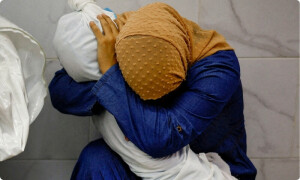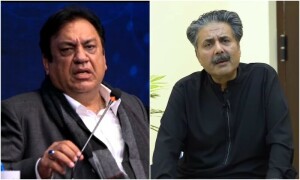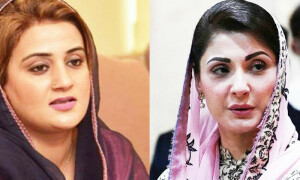
WHICH ethnicity and class has ruled us the most? Each era has a ruling clan with a top honcho and kitchen cabinet. But for ease, I focus on the former (ignoring dummy prime ministers). Jinnah (middle-class Mohajir); Liaquat Ali (landowner Mohajir), Bhuttos/Zardari (landowner Sindhis) and Sharif (industrialist Punjabi) were political and/or elected rulers.
But I take the full eras of Ghulam Mohammed/Zia (middle-class Punjabi); Iskander Mirza (middle-class Bengali/Mughal); Ayub (middle-class Pakhtun/Hindko); Yahya (middle-class ‘Frontier’ Persian) and Musharraf (middle-class Mohajir) as unelected or illegitimate. Apart from some, we have honest top honchos for the better part untainted by sleaze. But this didn’t end sleaze. Centrists (Jinnah and Bhutto/Zardari clan, all from Sindh) ruled for 17 years, politically.
Middle-class persons held the top spot the most (41 years), an industrialist for 10 years and landowners for 19 years. I don’t recall many landowners even in other kitchen cabinets. So, claims about their political hold only reflect their share in our dummy assemblies. Industrialist and landowner rule was elected (29 years); unelected rule (40 years) all by a right-wing middle-class.
Middle-class army rule was our most damaging era politically and security-wise. But this reflects both middle-class and army ethos. Sub-national rule by the middle-class PTI and MQM shows promise but it has issues too. But all its rules have had autocratic and elitist streaks. So its rise is no panacea.
Northern elites run our power train, with the south being pulled along.
Bengalis were a 50 per cent-plus majority till 1971 but got the top spot for three years, and that too via the bi-ethnic Mirza’s intrigue. Ayub ruled the longest, and then Punjabis and Mohajirs. After 1971, Punjab became a 50pc-plus majority and held the top spot most followed by Sindhis and Mohajirs. Paths to power and time there since 1947 vary ethnically. Punjabis and Mohajirs got it both ways (25 and 13 years), Sindhis politically (16 years), Pakhtun/Hindko non-politically (10 years) and Baloch neither way. Our most charismatic rulers (Jinnah, Ayub and Bhuttos) were all minorities; the three rulers from Punjab (all conservatives) had dour personas. It may be a fluke but I couldn’t resist a cheeky swipe at our forgiving hegemon. Change champ Imran may change this too, if nothing else. In Pindi, Punjabis were top honchos for 31 years (all after ’71), followed by Persian speakers, Mohajirs and Pakhtuns.
Punjab led both domains after 1971, but did share the top spots. The 18th Amendment helped a bit too. But a new era run by Punjab conservatism is on now, as demographic destiny becomes democratic destiny belatedly after ’71. All four prime ministers and three army chiefs after 2008 were Punjabi. Punjab conservative elites hold the top spots in the PML-N and PTI, the main 2018 federal rivals. And if we tire of democracy and ‘invite’ our Pindi boys for a ‘short’ run, we will get Punjab conservatism too! So, all paths to power end at it.
But size divides too. Our two key current conflicts (army vs Nawaz; PML-N vs PTI) are within Punjab conservatism, economic vs political. One wants peace, the other tensions with India. Both states now adorn three-barrel conservatism: economic elitism, social extremism and political exclusion.
Punjab conservatism’s hold irks KP elites less as they are largely conservative too and have a share in our real power bases (military/bureaucracy). It irks more the mainly centrist elites of the southern two provinces weak in these bases. This is the land of aggrieved ethnicities (Sindhis, Mohajirs and Baloch) irked with their low political pecking orders and in conflict with the centre.
The days the PPP ran centrist coalitions of weak elites federally are over. Northern elites now run our power train, with the south being pulled along reluctantly in back bogies. The plush front bogies sing fiery patriotic songs, the bare back ones moan in dissent sullenly. The creaky train mirrors the ‘Pakistan’ acronym: Punjab first, then Afghania, Sindh next and Balochistan last. What’s in a name? In Pakistan’s name is its elite hierarchy. But masses all suffer.
Punjab was a fun place once with bhangra, music and other fun stuff seen so vividly in the Billo day ghar song. I know as I was born there then, in Faiz and Manto’s land. It now adorns public religiosity which doesn’t improve morality but fans extremism and unthinking mediocrity. Many forms of mob extremism (acid, blasphemy and lawyers’ attacks) occur almost solely there. One yearns for the old Punjab, for its own, Pakistan’s and the region’s good. But that civilisation seems to have gone with the wind.
The writer is a Senior Fellow with UC Berkeley and heads INSPIRING Pakistan, a progressive policy unit.
Published in Dawn, September 12th, 2017











































